Flatpack Homes: The Future of Social Housing?
“Housing today is perhaps the most important form of social exclusion – and arguably the defining issue of our time.”
- Jack Self, Co-curator, the British Pavilion, Venice Biennale 2016 (1)
The housing crisis was one of the central topics in Phillip Hammond’s Autumn Statement, however, critics have argued that the outlined changes to combat the housing crisis were not enough. Dawn Foster, for example, wrote, “Hammond’s announcement of £4bn to fund new affordable homes was a headline-grabbing number. As always, though, it’s worth reading the small print: the £1.4bn tranche earmarked for local authorities to provide new affordable homes specifies the homes built can be shared-ownership schemes, or affordable rent, (that is, don’t forget 80% of the local market rent) but not social rent, which in many areas is the only truly affordable housing tenure.” (2)
The Guardian argues that the reality of affordable housing paints a “worrying picture.” (3) “The government’s figures show that affordable housing delivery was 52% lower in 2015-2016 compared with the previous year.” (3)
However, some leading architects have taken social housing back to the drawing board, and the results have been global. London, Bristol, Chile and Australia have adopted some aspect of “flatpack” houses. Marketed as a stepping stone out of homelessness, “first-home owners or low income households, and people interested in sustainable houses.” (4)
The Pop-Up Village: Lewisham, 2016 (5)
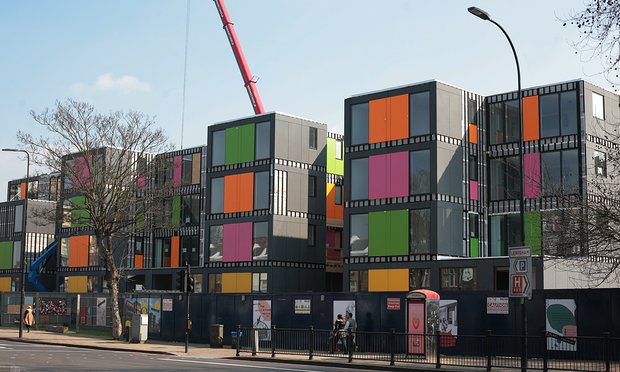
(Photo Source: The Guardian: 5)
- With a staggering 9,135 households on its waiting list for homes, the borough came up with the solution of a £4.3m scheme “to provide 24 homes and 880 sq m of business space that can be picked up and moved at a later date, allowing the council to make use of vacant brownfield land while longer-term projects are finalised.”
- The units, which are built in a factory and transported to the site, have a lifespan of 60 years.
- “The flats have cost £1,200 per sq m to make and fit out with kitchens, white goods and bathrooms, working out at £90,000 for each home. Harbour said building them in a factory rather than onsite allowed costs to be kept down. The lightweight timber construction has also meant savings, as the foundations only need to be half as deep as for equivalent brick-built blocks. They have a lifespan of 60 years and can be moved several times in that period and configured however the council needs them to be.”
- The development, which the council has branded as “the UK’s first pop-up village” were a solution to “Rapidly rising property prices and rents, combined with the loss of social housing through right to buy.” The result of these issues “have put councils under growing pressure to find new ways to help people off their housing lists.”
Tackling Homelessness: Bristol, 2016 (6)
- Replicating Lewisham’s Pop Up Village, Bristol might start witnessing similar flatpack houses, aiming to tackle “the city’s problem with homelessness.”
- Bristol councillor Paul Smith said the pop up accommodation is a ‘creative’ way of helping the city’s homeless.
- “Mr Smith said the pop-up accommodation would be ‘temporary solution, not a long term solution’ to homelessness.”
The Y Cube: Wimbledon, 2014 (7)
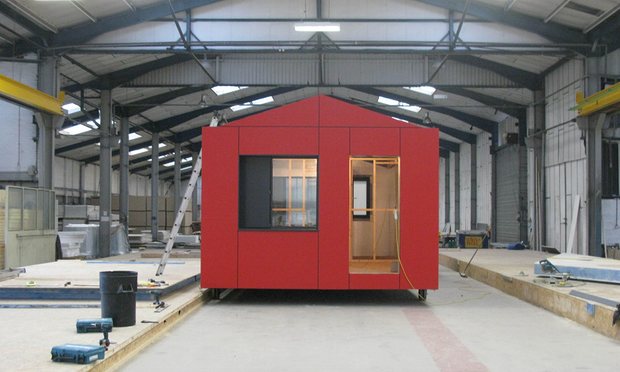
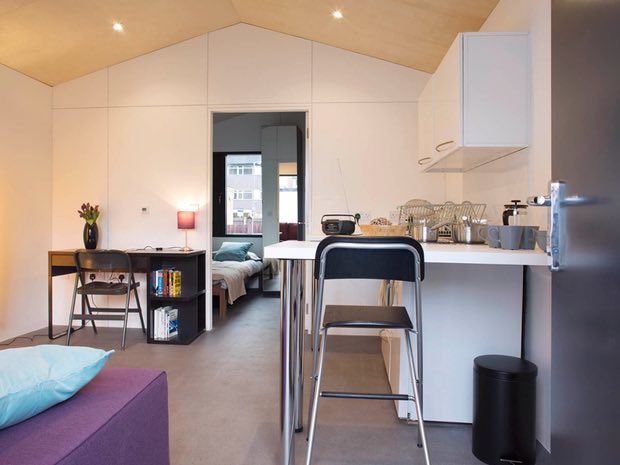
(Photo Source: The Guardian: 7)
- In 2014, Richard Rogers collaborated with the YMCA to create £30k flatpack homes for homeless people.
- According to its makers, the dwelling, which was airlifted onto a side street in Wimbledon, “could be the answer to the housing crisis…providing a first step for those in desperate need for accommodation.”
- Andy Redfearn of the YMCA explained, “The real issue is what happens when people leave our hostels.” “The only option is often poor quality shared accommodation managed by private landlords, who require large deposits and rent in advance.”
- The timber used is glue-laminated and cut with precision, making the units packed with insulations.
- The units can be stacked on top of one another to form an eight-storey high block.
- “The precision construction means a degree of air-tightness that brings the units to level six of the code for sustainable homes: a three-week test showed each home can be lit and heated to 20°C all day and all night for £7 per week. The system also allows for units to be joined, windows cut into corners and partition walls freely arranged within, bringing more flexibility than the usual container-home – and built with a lifespan of 60 years.”
The ZEDpod: London, 2016 (8)
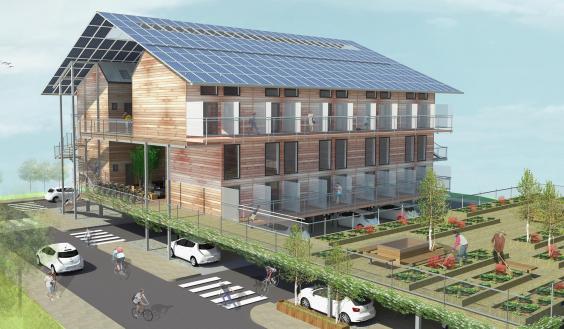
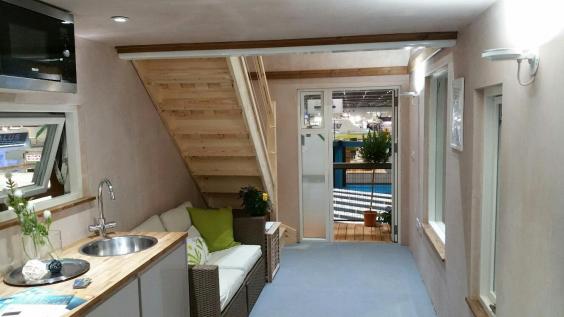
(Photo Source: Homes and Property: 8)
- The award winning architecture practice, Zed Factory, have created the ZEDpod: “Low-cost prefabricated pod homes.”
- Built on stilts above car parks, the proposal is to create low cost, environmentally friendly housing.
- “If a site later became earmarked for development, [it] could simply be transported to another location.”
- The development would be cheap to run, equipped with solar panels, water recycling systems and even “on-site charging points for electric vehicles.”
- “At a cost of £60,000 each to build, they are intended as affordable starter and rental homes, their size dictated by that of two car parking bays below.”
- “They could, however, still be rented out for an estimated £650 to £750 per month.”
Modulhus: For the First Time Buyer, 2016 (9)
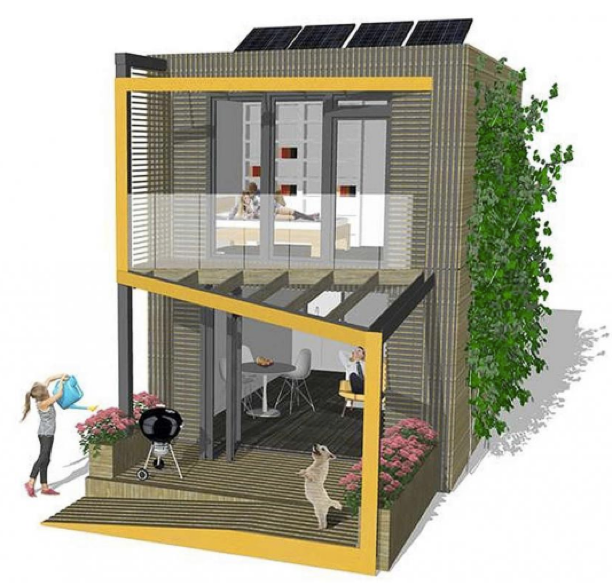
(Photo Source: Homes and Property: 9)
- These “pre-built, customisable homes are being touted as a way to help get first-time buyers onto the property ladder.”
- “A far cry from the low-quality post-Second World War prefab houses, new technology means that factory-built houses can be at the cutting-edge of architecture - functional, sustainable and generally more affordable than traditional brick.”
- “TV property experts Kevin McCloud, Charlie Luxton and George Clarke awarded it the winner of the Starter Home on a Shoestring competition, run by the National Custom & Self Build Association.”
- The design is pre-built in a factory and then transported to the desired site. The assembly can take just a few days.
- “There is no need for internal structural support so just about any interior layout can be accommodated.”
- “With possible savings of up to 30 per cent on buying an existing property, including buying the land, this could bring the average cost of first-time buyer homes down to £300,000 from £430,000 in London, and £175,000 from £250,000 nationwide.”
Modular Architectural Adaptable Panel: Australia, 2016 (4)

(Photo Source: ABC: 4)
- Designed and manufactured by Daniel Reitsma and Edward Duc, this flatpack house was built like Lego, “if you use the same sized pieces you can build what you want.”
- “Buyers can add to the layout later by adding rooms when they can afford to.”
- Their construction of the “three-bedroom, two-bathroom prototype home initially took eight weeks, with a team of five.”
- Mr Duc, the architect involved in the project explains, “In traditional construction up to 30 per cent of the materials and labour is wasted – houses use more energy than any other type of building in the world.”
- “The only way we will be able to house people satisfactorily is to produce houses in factories.”
Chile: Half a House, 2010
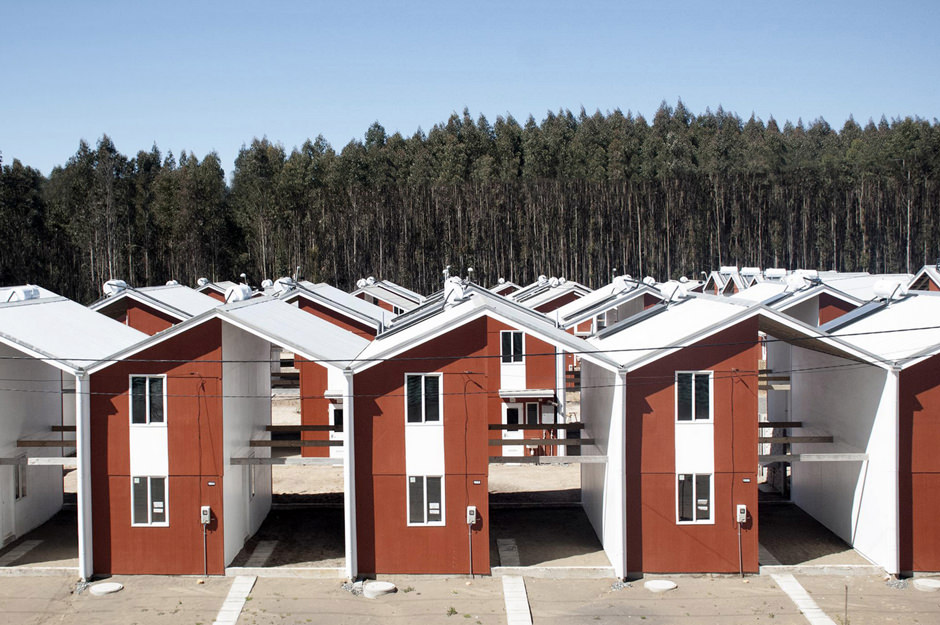
(Photo Source: 99 Percent Invisible: 10)
- “With a magnitude of 8.8, the quake that hit Constitución was the second biggest that the world had seen in half a century. The quake and the tsunami it produced completely crushed the town. By the time it was over, more than 500 people were dead, and about 80% of the Constitución’s buildings were ruined.” (10)
- As part of the relief effort, architect Alejandro Aravena reshaped the concept of social housing by providing victims half a house. (10)
- “They are cheaper to build, and easier to construct, than traditional social housing. But crucially, they also allow the homeowners themselves to invest in the property to bring it up to a middle-class standard: the exact same process that happens without guidance (and indeed often against the law) in informal settlements around the world.” (11)
- “In the context of Chile, Aravena’s ideas empowered a group of people whose lives were devastated by a natural disaster – the 2010 tsunami. In the British context, of course, Jack Self points out that handing ownership of social housing to the people who live there was the reasoning behind the right-to-buy policy – which has been an unmitigated disaster for anyone who needs social housing but wasn’t lucky enough to ride the first wave of selloffs.” (11)
Written by Jenna Kamal, Lead Copywriter at Property Moose

Disclaimer and Legal
Property Moose does not provide any advice in relation to investments and you must rely on your own due diligence before investing. Please remember that property prices can go down as well as up and that all figures, rates and yields are projections only and should not be relied on. If in doubt, please seek the advice of a financial adviser. Your capital is at risk if you invest. This post has been approved as a financial promotion by Resolution Compliance Limited.
Property Moose is a trading name of Crowd Fin Limited which is an Appointed Representative of Resolution Compliance Limited which is authorised and regulated by the Financial Conduct Authority (no: 574048).
Sources
- http://www.homesandproperty.co.uk/property-news/are-60k-homes-built-on-stilts-above-car-parks-the-answer-to-londons-housing-crisis-a101921.html
- https://www.theguardian.com/artanddesign/architecture-design-blog/2014/feb/14/richard-rogers-and-ymca-unveil-30k-flatpack-homes-for-homeless-people
- http://www.bristolpost.co.uk/colourful-flat-pack-houses-could-pop-up-in-bristol-to-beat-homelessness/story-29697440-detail/story.html
- https://www.theguardian.com/cities/video/2016/jun/16/built-my-own-social-housing-chile-half-houses-video
- https://www.theguardian.com/housing-network/2016/nov/25/philip-hammond-chancellor-weak-housing-crisis
- https://www.theguardian.com/housing-network/2016/nov/30/housebuilding-up-office-conversions-social-housing
- http://www.abc.net.au/news/2016-07-25/flat-pack-homes-answer-to-australia-affordable-housing-crisis/7651366
- https://www.theguardian.com/society/2016/mar/18/pop-up-village-in-south-east-london-to-house-homeless-families
- http://www.homesandproperty.co.uk/property-news/affordable-housing-crisis-could-this-50k-modulhus-be-the-future-of-new-homes-for-firsttime-buyers-a105836.html
- http://99percentinvisible.org/episode/half-a-house/
- https://www.theguardian.com/cities/2016/jun/20/how-we-live-now-inside-revolution-urban-living